Can you Train Autoflowers?
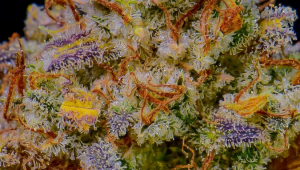
- 1. Why train autoflowers at all?
- 2. When to train autoflowers?
- 3. What’s the best technique to train autoflowers?
- 3. a. Topping
- 3. b. Fimming
- 4. What technique can be combined with topping and fimming?
Training cannabis plants sounds a little off to novice growers. They often wonder what it is, and what exactly entails. After reading around the topic and trying it themselves, they quickly come to realize that physically manipulating the way that a cannabis plant grows reaps some serious benefits. A variety of training practices open up the canopy and promote air circulation, which in turn helps to decrease the risk of mold and diseases. Likewise, this new structure also helps light penetrate deeper into the canopy and bolster buds situated lower down. Of course, one of the main reasons growers choose to go to the efforts of training their plants is to boost overall yields.
But can you train autoflowers? This is a question many people ask, especially when they are freshly introduced to autoflowers. The short answer is – yes, you can train autoflowers. However, you’ll have to choose specific training techniques that are meant for autos. Regular cannabis plants or photoperiod plants can withstand any type of training technique because you can wait for the plant to grow back normally even if you mess up. But, autos grow according to a specific age or time period and there’s not enough time. Choose good training techniques wisely and you’ll be rewarded well. But, if you decide to go for something that doesn’t suit autos, you’ll end up with small yields. Thus, although you can train autos very well and expect great yields, the methods you choose are critical.
1. Why train autoflowers at all?
Autoflowers have a short lifespan. They grow and flower pretty quickly within a span of 2-3 months, so why train them at all? Some growers actually don’t train their autoflowers. They let them free and the plants grow normally. Such plants often have one main cola that’s usually heavy and stuffed with buds. You’ll also see other smaller colas but they are nothing compared to the biggest main cola.
This structure actually produces good results. However, letting plants grow free leaves some of their genetic and yield potential untapped. Furthermore, although large central colas look great and weigh a lot, they can become problematic in certain environments. Because they are so dense, they are predisposed to mold when growing in a humid climate, or a region that experiences large amounts of rainfall during the latter part of the growing season. Nothing devastates cannabis growers as much as opening up a large prized cola and discovering fungal hyphae decomposing it from the inside out.
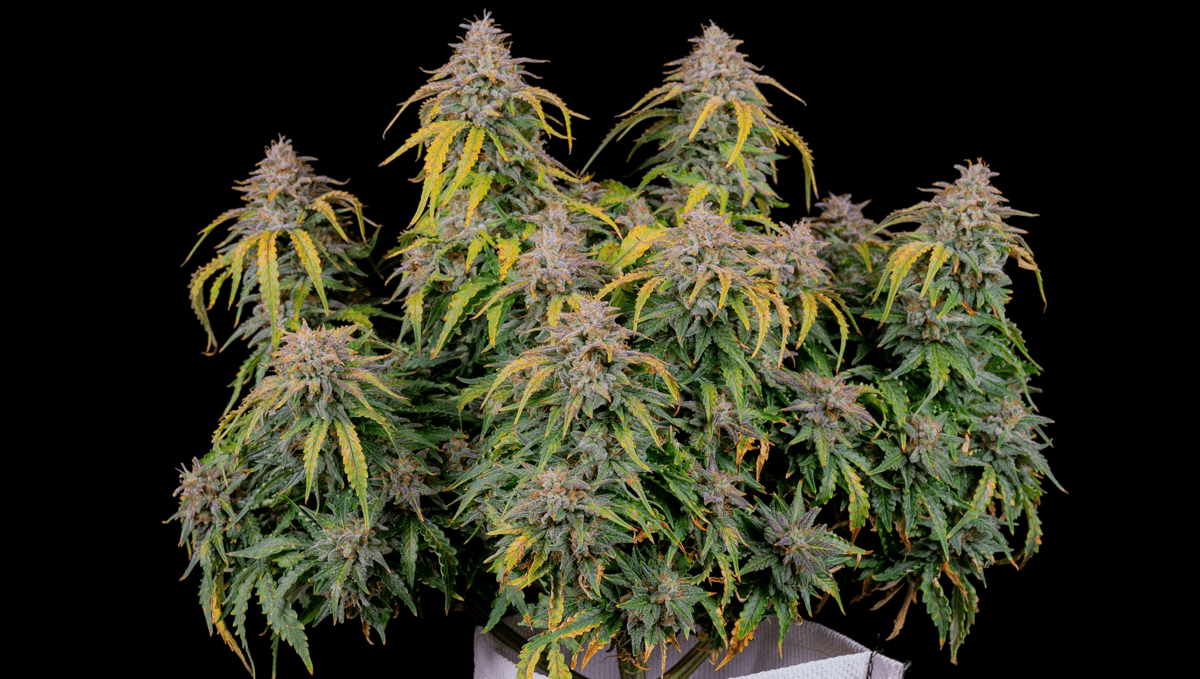
If you train autos, though, you can force the plant to distribute its energy among several colas. This produces a uniform output plus larger yields because you now have several colas with loads of buds. But, is this the only reason you train autoflowers? No, there’s another important reason. You train autoflowers because training helps the plant grow in a consistent or uniform manner. What this does is that it helps the plant utilize the light available to its maximum potential. All the cola tops get equal amounts of light.
If you compare that with a plant with a single huge cola, you’ll notice that all the other branches produce really small buds called popcorn buds because they don’t get sufficient light. It’s just like the forest where tall trees get all the light and keep growing whereas smaller plants struggle to survive. By ensuring that all the colas get equal light, you can rest assured that you’ll get more yield as well. Sure, training techniques demand your attention and you’ll have to make a few adjustments in between but they are really worth it.
2. When to train autoflowers?
Now that you know that training autoflowers gives you good results, you should also know when to train them. Understand this right away – autoflowers can be trained only in the vegetative period. Do NOT train autos in their flowering period lest you want to reduce yields. Why? Well, just like other plants, autos are sensitive during their flowering stage and you don’t want to mess with them at all! Small unnoticed mistakes you make during the flowering stage can ruin the plant’s yields. Ultimately, you’ll end up with a stunted plant with airy buds that are really disappointing.
Also, another factor to remember is that you cannot subject the plant to a lot of training even during the vegetative stage. Autoflowers have a short vegetative period (2-4 weeks) and extensive training will certainly stunt the plant’s growth. Instead of training the plant using four different techniques, choose one or two techniques to maximize results.
3. What’s the best technique to train autoflowers?
The best way to train autoflowers is topping, without a doubt. You can also use another training technique called FIMing. Both techniques are very similar and you can use other techniques along with either topping or FIMing.
Topping
Topping is technique where you cut off the tip of the plant. You can start topping once the plant develops at least 4-5 sets of leaves. Be careful not to top the plant too early because you’ll shock the plant when it’s still very young. And, remember not to do it in the flowering stage. This means that you’ll have about 3-4 weeks to top the plant and let it grow normally. You can top multiple times as the plant develops but you must stop as soon as the plant starts producing pistils.
Some growers are afraid to top their plants but it’s not really that bad. Autos aren’t that fragile. You can top them without having to worry about hurting the plant as long as you do it after it’s a little sturdy enough to handle it. Topping ensures that you get more colas and it also creates a uniform canopy that’s easy to maintain.
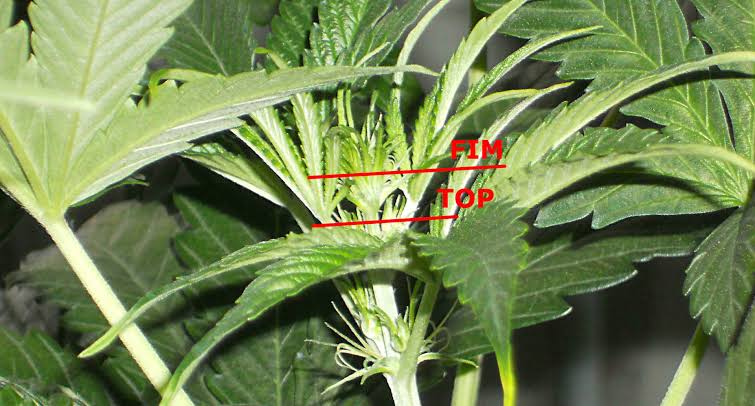
So, how do you top autoflowers? Once the plant starts growing, you’ll see the cotyledon emerge. Next, you’ll see true leaves that come in sets. After the plant develops at least 4-5 sets of true leaves, take a clean pair of scissors and cut off the tip of the plant in one single swift motion. You must sanitize the scissors or the plant may be infected. But, what if you mess up and fail to snip off the top? What if you cut it in an uneven fashion? Well, it’s called FIMing.
FIMming
FIM or “Fuck I missed” is a technique very similar to topping. It was discovered by a grower that failed to top his plants properly. Instead of snipping away the tip of the plant entirely, he missed and cut the top in a haphazard manner. He was sure that he had messed up but the plant grew many more colas to his surprise. And, thus, a new technique called FIMming was discovered. FIMing is very similar to topping. You can choose any of the two methods to produce more colas successfully. While topping produces two main colas when you cut the tip, FIMing produces several different colas. Scientifically, you’re stressing the plant to focus its energy on the tip and send more of its resources to its axillary points. When the tip is separated, new leaves growing just below the tip get more light and produce more colas.
How do you FIM the plant? Well, it’s just like topping. Once the plant develops about 4-5 sets of true leaves, pinch the tip off with your fingers. There’s no need to use scissors but you can use them if you wish. FIMing will not remove the tip entirely but even if you cut the tip in a haphazard fashion, you’ll end up with many colas that produce heavy buds. Just like topping, you must apply FIMing technique when the plant is still in its vegetative stage. Do not even think of training the plant in the flowering stage.
4. What technique can be combined with topping and FIMming?
One technique that suits autos the best is LST. LST or Low-Stress Training is a method that stresses the plant. However, the stress is low, and doesn’t harm the plant in any way. To LST the plant, bend the main cola to the side using a cable tie or wire. Keep repeating the process until all the branches come to the side of the pot. This method ensures that all the parts of the plant get equal light and you’ll end up with plants that produce a lot of buds. Remember to use either topping combined with LST or FIMing coupled with LST. Do not overdo it because the plants will not be able to handle all the stress.







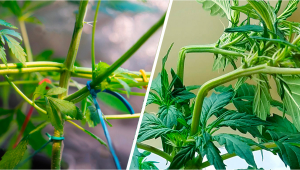
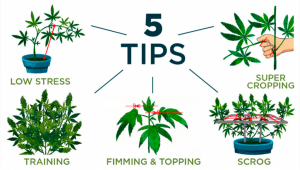


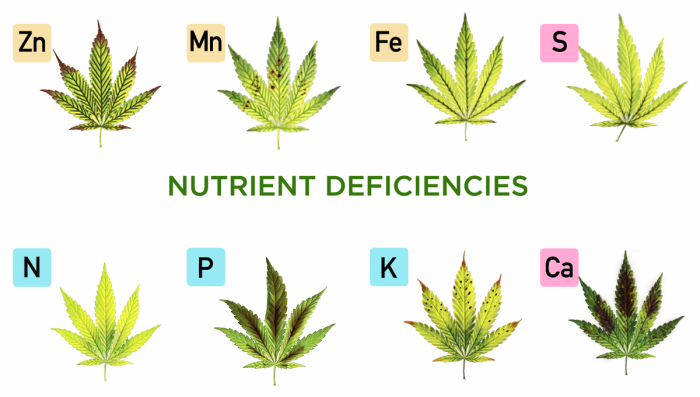
Comments